

Woodworking Information : Different Types of Wood. Industrial Sawmill in Operation. The chemistry of wood. Building with Wood. As building technologies evolve, one material remains as in-demand as ever: wood.
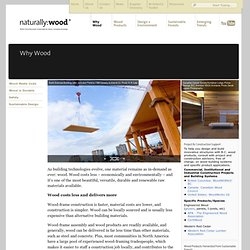
Wood costs less – economically and environmentally – and it’s one of the most beautiful, versatile, durable and renewable raw materials available. Engineered wood. Engineered wood, also called composite wood, man-made wood, or manufactured board; includes a range of derivative wood products which are manufactured by binding or fixing the strands, particles, fibers, or veneers or boards of wood, together with adhesives, or other methods of fixation[1] to form composite materials.
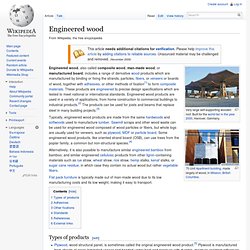
These products are engineered to precise design specifications which are tested to meet national or international standards. Engineered wood products are used in a variety of applications, from home construction to commercial buildings to industrial products.[2] The products can be used for joists and beams that replace steel in many building projects.[3] Typically, engineered wood products are made from the same hardwoods and softwoods used to manufacture lumber. Sawmill scraps and other wood waste can be used for engineered wood composed of wood particles or fibers, but whole logs are usually used for veneers, such as plywood, MDF or particle board. Adhesives[edit]
Wood. Wood surface, showing several features Wood is a hard, fibrous structural tissue found in the stems and roots of trees and other woody plants.
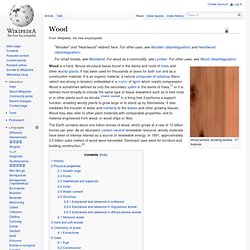
It has been used for thousands of years for both fuel and as a construction material. It is an organic material, a natural composite of cellulose fibers (which are strong in tension) embedded in a matrix of lignin which resists compression. Wood is sometimes defined as only the secondary xylem in the stems of trees,[1] or it is defined more broadly to include the same type of tissue elsewhere such as in tree roots or in other plants such as shrubs. [citation needed] In a living tree it performs a support function, enabling woody plants to grow large or to stand up by themselves. The Earth contains about one trillion tonnes of wood, which grows at a rate of 10 billion tonnes per year. History Wood can be dated by carbon dating and in some species by dendrochronology to make inferences about when a wooden object was created. Physical properties. Paper. Different typologies of paper Paper is a thin material produced by pressing together moist fibers, typically cellulose pulp derived from wood, rags or grasses, and drying them into flexible sheets.
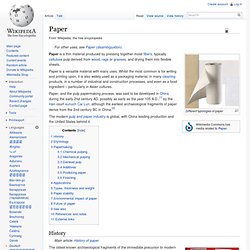
Paper is a versatile material with many uses. Whilst the most common is for writing and printing upon, it is also widely used as a packaging material, in many cleaning products, in a number of industrial and construction processes, and even as a food ingredient – particularly in Asian cultures. Paper, and the pulp papermaking process, was said to be developed in China during the early 2nd century AD, possibly as early as the year 105 A.D.,[1] by the Han court eunuch Cai Lun, although the earliest archaeological fragments of paper derive from the 2nd century BC in China.[2] The modern pulp and paper industry is global, with China leading production and the United States behind it. History Etymology Papermaking Chemical pulping There are three main chemical pulping processes.
Paper. In Northern Ireland, nearly 20% of the material in our bins is paper.
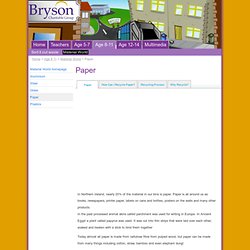
Paper is all around us as books, newspapers, printer paper, labels on cans and bottles, posters on the walls and many other products. In the past processed animal skins called parchment was used for writing in Europe. In Ancient Egypt a plant called papyrus was used. It was cut into thin strips that were laid over each other, soaked and beaten with a stick to bind them together Today almost all paper is made from cellulose fibre from pulped wood, but paper can be made from many things including cotton, straw, bamboo and even elephant dung!
Many areas of the world produce large amounts of wood, some of which is used in the paper industry and include South America, Indonesia, South Africa and Europe. Trees for making paper are now usually grown in ‘sustainable forests’, this means that new trees are planted to replace those cut down. Sometimes old forests are cut down for their wood and then replaced with new trees.